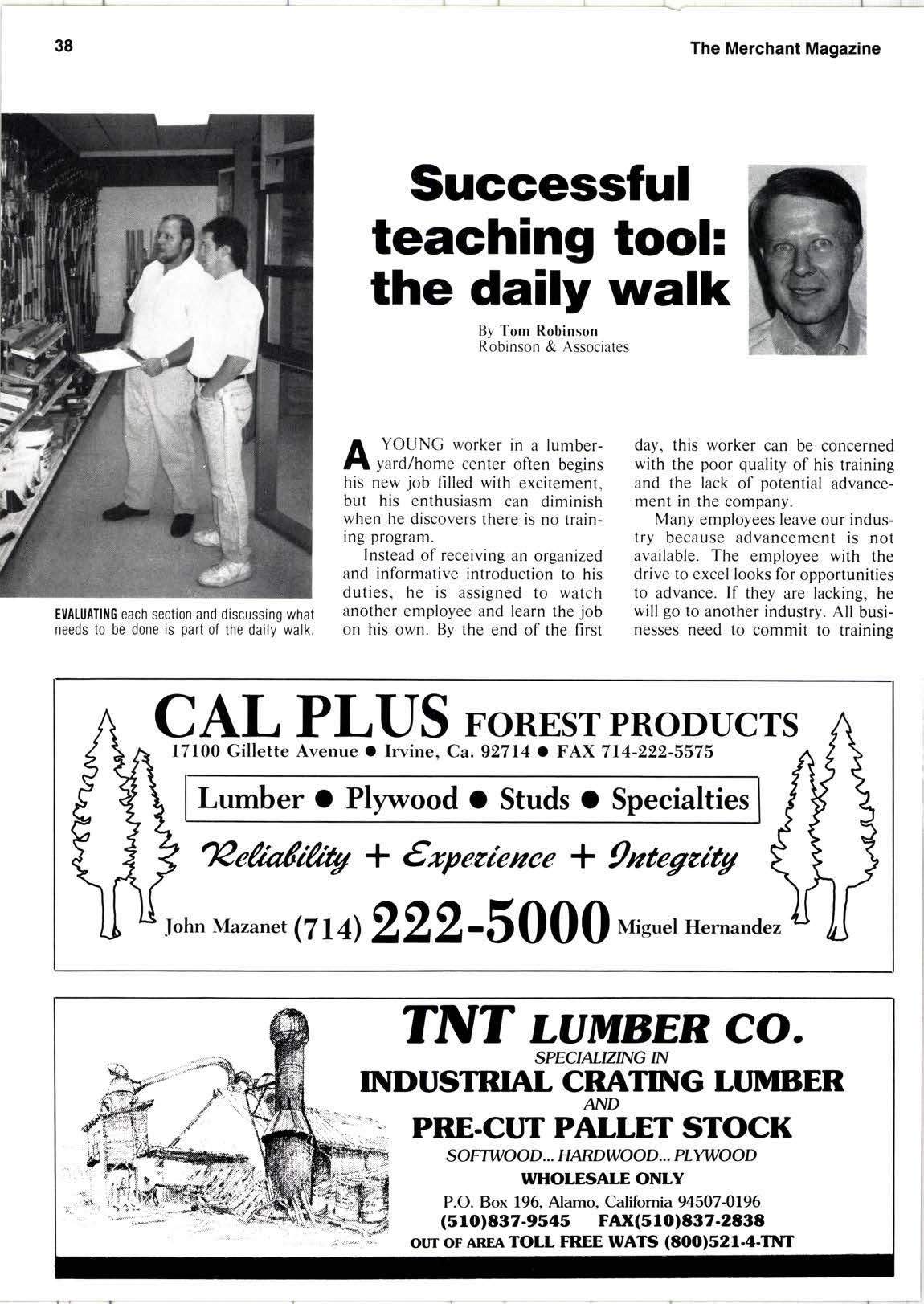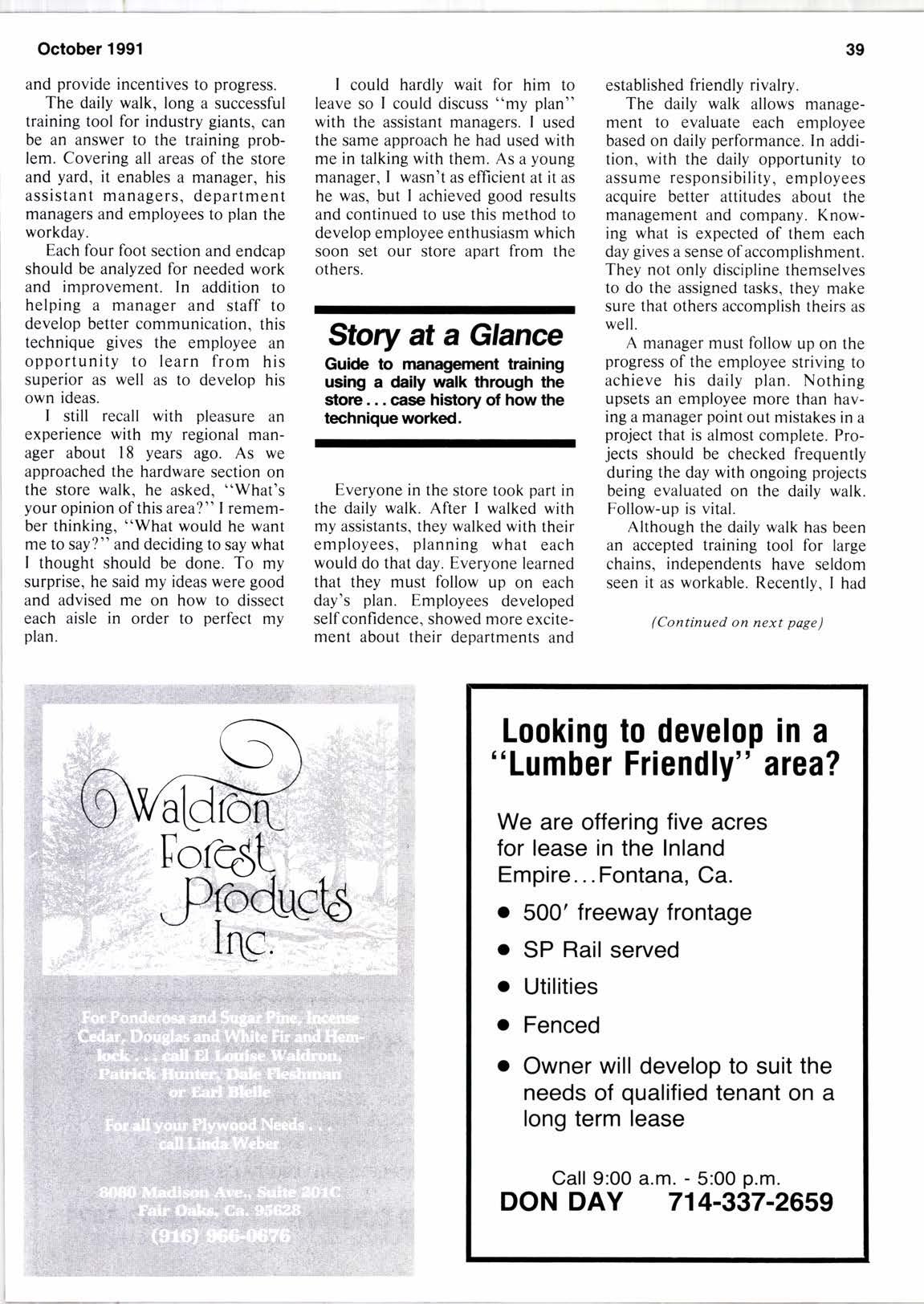
2 minute read
Successful teaching tool: the daily walk
By Tom Robinson Robinson & Associates
A YOUNC worker in a lumberA yard/home center often begins his new job filled with excitement, but his enthusiasm can diminish when he discovers there is no training program. Instead of receiving an organized and informative introduction to his duties, he is assigned to watch another employee and learn the job on his own. By the end of the first day, this worker can be concerned with the poor quality of his training and the lack of potential advancement in the company.
Many employees leave our industry because advancement is not available. The employee with the drive to excel looks for opportunities to advance. If they are lacking, he willgo to another industry. All businesses need to commit to training and provide incentives to progress.
The daily walk, long a successful training tool for industry giants, can be an answer to the training problem. Covering all areas of the store and yard, it enables a manager, his assistant managers, department managers and employees to plan the workday.
Each four foot section and endcap should be analyzed for needed work and improvement. In addition to helping a manager and staff to develop better communication, this technique gives the employee an opportunity to learn from his superior as well as to develop his own ideas.
I still recall with pleasure an experience with my regional manager about 18 years ago. As we approached the hardware section on the store walk, he asked, "What's your opinion of this area? " I remember thinking, "What would he want me to say?" and deciding to say what I thought should be done. To my surprise, he said my ideas were good and advised me on how to dissect each aisle in order to perfect mv plan.
I could hardly wait for him to leave so I could discuss "my plan" with the assistant managers. I used the same approach he had used with me in talking with them. As a young manager, I wasn't as efficient at it as he was, but I achieved good results and continued to use this method to develop employee enthusiasm which soon set our store apart from the others.
S-tory at a Glance
Gukfe to management training using a daily rvalk through the storc. case history of how the technique worked.
Everyone in the store took part in the daily walk. After I walked with my assistants, they walked with their employees, planning what each would do that day. Everyone learned that they must follow up on each day's plan. Employees developed self confidence, showed more excitement about their departments and established friendly rivalry.
The daily walk allows management to evaluate each employee based on daily performance. In addition, with the daily opportunity to assume responsibility, employees acquire better attitudes about the management and company. Knowing what is expected of them each day gives a sense of accomplishment. They not only discipline themselves to do the assigned tasks, they make sure that others accomplish theirs as well.
A manager must follow up on the progress of the employee striving to achieve his daily plan. Nothing upsets an employee more than having a manager point out mistakes in a project that is almost complete. Projects should be checked frequently during the day with ongoing projects being evaluated on the daily walk. Follow-up is vital.
Although the daily walk has been an accepted training tool for large chains, independents have seldom seen it as workable. Recentlv. I had
(Continued on next page)











